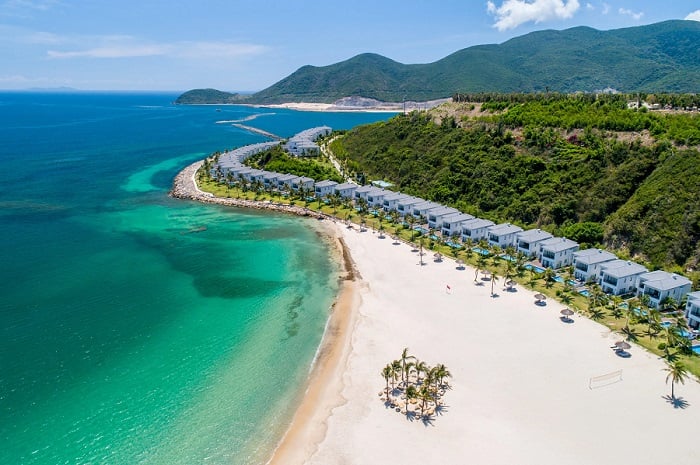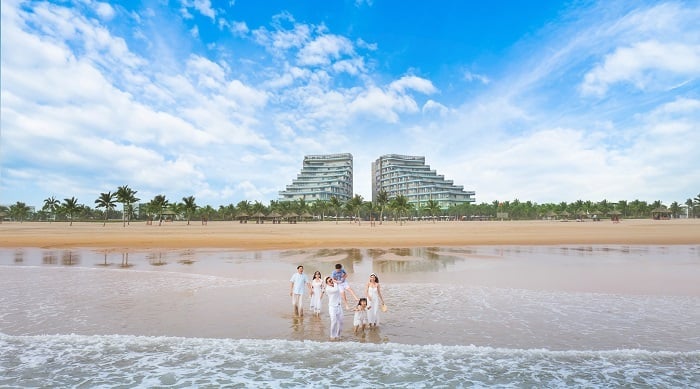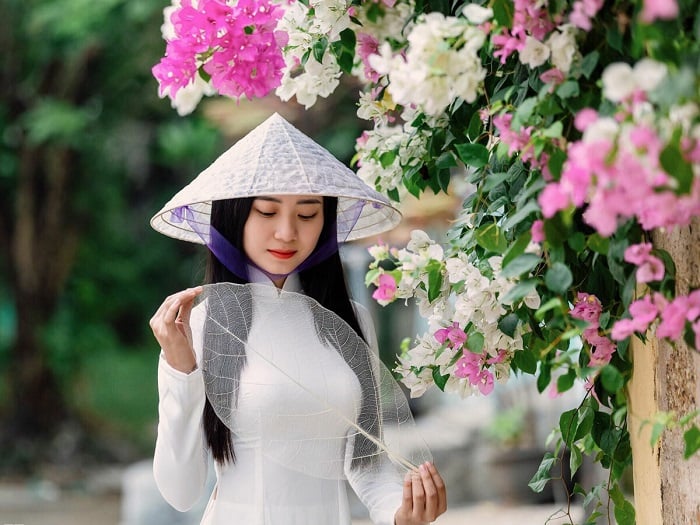
During your Vietnam travel journey, it is easy to catch sight of Vietnamese women wearing non la Vietnam, especially at traditional markets or in rural areas. This special kind of accessory has evolved with Vietnamese culture, appearing not only in daily life but also in Vietnamese traditional music and poetry. If you are interested in this national headwear, read on to discover some interesting information about it.
1. The origin of non la Vietnam (Vietnamese conical hat)
Vietnamese conical hats can be found throughout the country. It is said that they originated in the ancient capital city of Hue. Given the fact that images of non la Vietnam were found on several Ngoc Lu bronze kettledrums and Ao Thinh bronze jars dating back over 2,500 to 3000 years ago, it is likely that Vietnamese people have worn non la Vietnam for millennia.

Non la, like many other traditional Vietnamese clothing items, has its own story of origin, which is related to Vietnam rice growing culture. The story is about a gorgeous goddess who descended from the sky to save people from a massive flood. Her large hat, consisting of four round leaves sewn together with bamboo sticks, protected the people from adverse weather. Furthermore, she also taught them how to grow vegetables and trees for a living. Thus, after the Goddess vanished, the local people erected a temple to honor her as the rain-shielding goddess. They also attempted to make hats that were identical to the ones worn by the Goddess by using natural and readily available materials like palm leaves and bamboo. The result is the conical hat Vietnam that we know today.
2. Different types of non la hat Vietnam through historical periods
Non la has undergone numerous changes in terms of shape, material, and size since its first appearance around 3000 years ago. In the past, conical hats of Vietnam were separated into three primary categories, including Non Muoi (or Non Ba Tam), Non Nho, and Non Sau.
- Non Muoi (or Non Ba Tam) is a must-have item for rural women who take part in festivals or visit pagodas. It is flat and round, about 1 meter in diameter, with a rattan chin-strap.
- Non Nho is a medium-sized hat, which can be considered as a smaller version of Non Muoi.
- Non Sau is the smallest hat, which is mostly used by previous generations in daily life.
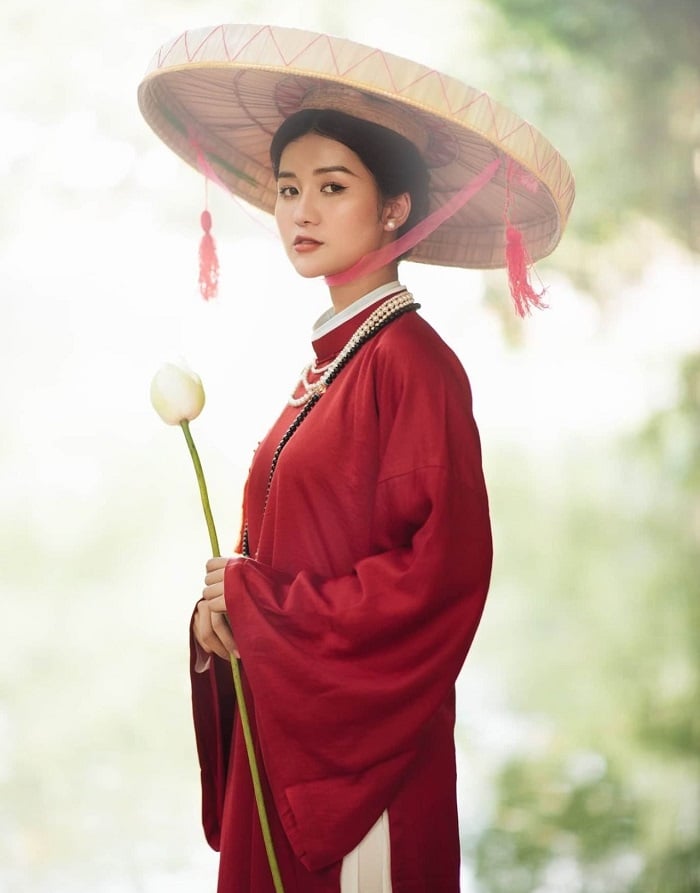
At that time, non la Vietnam was also classified based on the owners' status. Some were for the elderly, others for the wealthy and mandarins. Each type has its own shape and characteristics.
Nowadays, the most popular type of non la Vietnam is the one in the conical shape. This type of Vietnamese non la is more practical compared to the others. The conical hat's pointed design makes raindrops slide down the wide brim and away from the wearer. It also shields the wearer from sunrays.
3. Which materials are used to make non la? How to make it?
- Materials of non la Vietnam
Vietnamese conical hats are often made of inexpensive natural materials such as palm or bamboo leaves, the bark of Moc trees, and bamboo, which can withstand extreme heat and moisture. The body of non la Vietnam is often made of bamboo, then dried leaves are weaved in such a way that the hat is virtually waterproof. Hats are frequently embellished with rattan, cotton, or silk ribbon. If they are used for ceremonial purposes, the ribbons can be vividly colored.
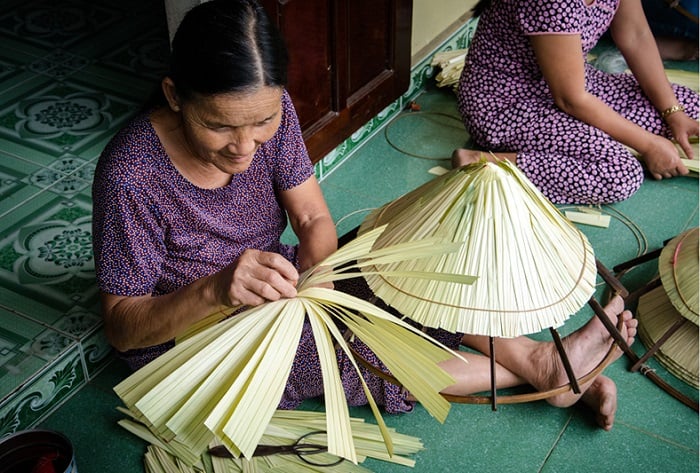
- The process of making non la Vietnam
Non la Vietnam may look simple, but there are a number of steps in making it, including collecting, drying, and ironing leaves and creating bamboo frames before weaving.
The first step is collecting and drying leaves in the sun, soaking them in water for about three hours, then leaving them in the open overnight to get a lovely ivory hue. The leaves are then heated up and ironed to have a fresh look and be smoother and finer.
After that, the body of the hat is built using bamboo tied together. For the covering, two layers of leaves are sown together with a thin plastic thread. In addition, two fringe hangings are stitched into the underside of the hat so that wearers can tie a silk ribbon to serve as a chin strap.
Finally, the conical hat of Vietnam is covered with a thin layer of varnish consisting of turpentine and alcohol to make the hat more durable and waterproof.
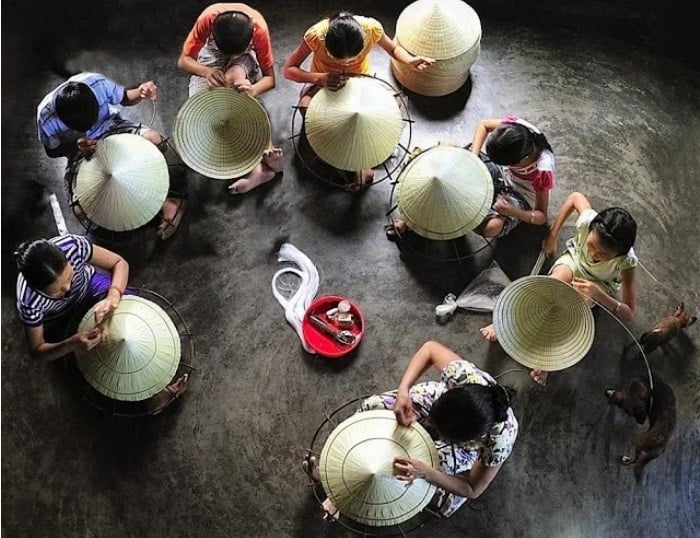
4. Where are the most renowned villages in Vietnam for non la making?
Due to its popularity, Vietnam has numerous conical hat making villages in each region:
4.1. Chuong Village in Ha Noi
Chuong Village, situated in Thanh Oai District, Hanoi, is one of the most famous craft villages in Northern Vietnam, known for its sturdy and shiny conical hats. The tradition of making non la Vietnam has been passed down for more than 300 years in this ancient village. The artisans here stitch three layers of green palm leaves to make their products more weather-resistant. A hat costs VND 3,500 - 10,000 in the village, but it might cost VND 50,000 - 100,000 at souvenir shops in Hanoi, depending on the quality.
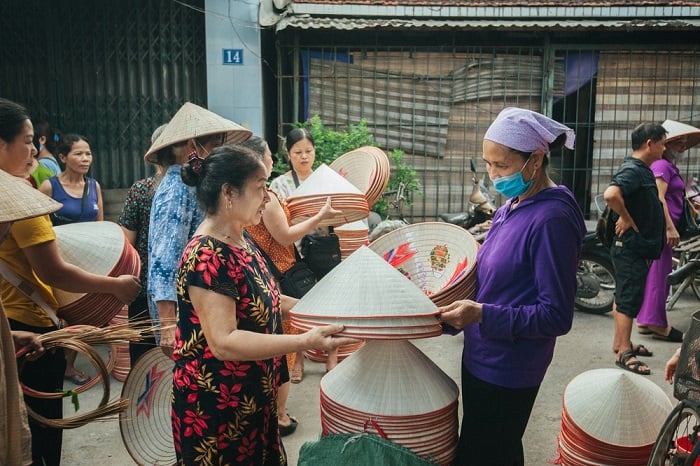
4.2. Famous non la making villages in Hue
Conical hat making originated in Hue and has existed for hundreds of years, with many famous villages such as Da Le, Phu Cam, Doc So, Trieu Tay, Kim Long, etc. The highlight of Hue’s conical hat is that beautiful images of local landscapes or famous poems are meticulously weaved between two layers of leaves. Particularly, these patterns can only be seen when the hat is exposed to light.
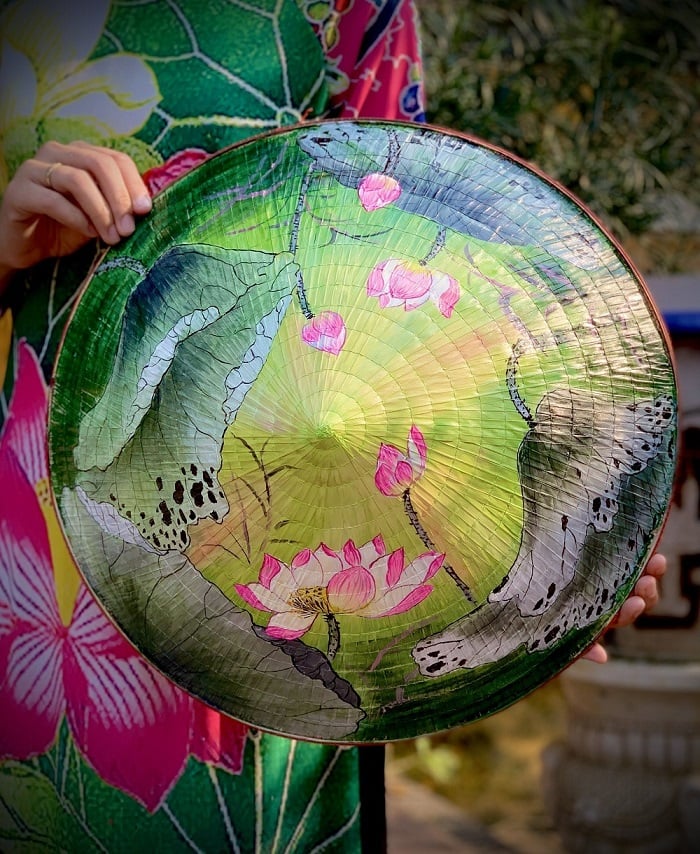
4.3. Thoi Tan Village in Can Tho
Thoi Tan Village, located in the glamorous city of Can Tho, is another well-known non la making village in Vietnam. Thoi Tan conical hat is made of lady palm leaves and bamboo. Lady palm is a tree that has widely spreading leaves like palm leaves, seen a lot in Phu Quoc, Ca Mau, Tay Ninh, etc. The price of Thoi Tan conical hat is slightly higher than others, at VND 15,000 per hat in the village.
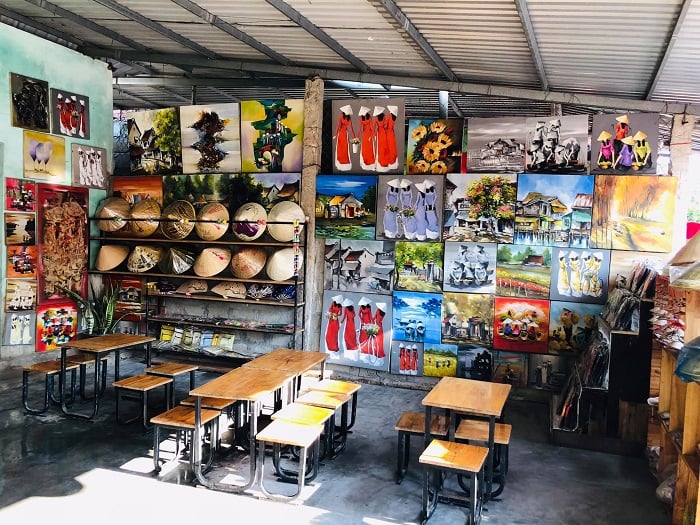
If you are planning for your vacation in Vietnam, it is highly recommended that you visit some well-known tourist destinations such as Phu Quoc, Nha Trang, Hoi An. There, you should enjoy a luxurious stay at the system of Vinpearl hotels and resorts.
- If you intend to enjoy your holiday on Phu Quoc pearl island, the luxurious and all-inclusive hotels and resorts of Vinpearl Phu Quoc are the perfect places to stay on your trip. At Vinpearl Phu Quoc, you have an opportunity to experience world-class accommodations and all sorts of amenities, such as outdoor swimming pools, children's playgrounds, babysitting services, restaurants, bars, gyms, and so on.
- In the beautiful coastal city of Nha Trang, it is suggested that you stay at the hotels and resorts of Vinpearl Nha Trang. They are ideal places for those who want to recharge their energy and escape from bustling daily life. The properties of Vinpearl Nha Trang offer comfortable, thoughtfully designed rooms with expansive views of Nha Trang Bay.
- In Hoi An, it is recommended that you stay at Vinpearl Resort & Golf Nam Hoi An to enjoy high-quality services and luxury facilities! Vinpearl Resort & Golf Nam Hoi An is a masterpiece that harmonizes the contemporary architectural style and the beauty of nature.

>>> Book rooms in Vinpearl Phu Quoc, Vinpearl Nha Trang, Vinpearl Resort & Golf Nam Hoi An for the most amazing vacation!
Non la Vietnam is not only a clothing item which protects the wearer from the rain and sun but also represents the cultural values of Vietnam. This conical hat is still very popular in many Vietnamese villages. Visiting Vietnam, you should consider bringing home a non la as a gift for your loved ones.



